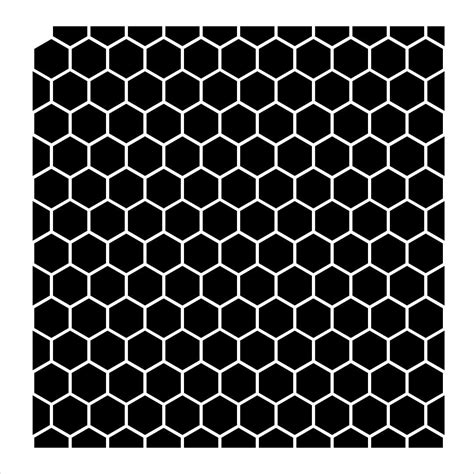Understanding the Stencil-Mate’s Resolution Capabilities
The Rayming Stencil-Mate is a versatile and efficient tool for PCB Assembly, allowing users to print high-quality solder paste stencils for various components. One of the most crucial factors to consider when using the Stencil-Mate is the resolution of the components that can be printed. In this article, we will explore the resolution capabilities of the Rayming Stencil-Mate and discuss how it can help you achieve optimal results in your PCB assembly process.
What is Component Resolution in PCB Assembly?
Component resolution refers to the smallest feature size that can be accurately printed on a PCB using a solder paste stencil. This includes the pitch (distance between the centers of adjacent pads), pad size, and aperture size. The resolution of a component directly affects the quality and reliability of the solder joint formed during the reflow process.
Stencil-mate resolution Specifications
The Rayming Stencil-Mate is designed to print solder paste stencils with high precision and accuracy. The system is capable of printing stencils for components with the following resolutions:
| Component Pitch | Minimum Pad Size | Minimum Aperture Size |
|---|---|---|
| 0.4mm | 0.2mm | 0.15mm |
| 0.5mm | 0.25mm | 0.2mm |
| 0.65mm | 0.3mm | 0.25mm |
| 0.8mm | 0.4mm | 0.35mm |
| 1.0mm | 0.5mm | 0.45mm |
These specifications enable the Stencil-Mate to print stencils for a wide range of SMD components, including chip resistors, capacitors, SOICs, QFPs, and BGAs.
Factors Affecting Stencil-Mate Resolution
Several factors can influence the resolution of components that can be printed with the Rayming Stencil-Mate. Understanding these factors can help you optimize your stencil design and achieve the best possible results.
Stencil Thickness
The thickness of the solder paste stencil plays a significant role in determining the resolution of the components that can be printed. Thinner stencils allow for finer pitch components and smaller apertures, while thicker stencils are better suited for larger components and higher solder paste volumes.
The Rayming Stencil-Mate supports stencil thicknesses ranging from 0.1mm to 0.3mm, providing the flexibility to choose the optimal thickness for your specific application.
Aperture Design
The design of the stencil apertures is another crucial factor affecting the resolution of the printed components. Aperture design involves optimizing the size, shape, and orientation of the openings in the stencil to ensure proper solder paste deposition.
The Stencil-Mate’s software includes a comprehensive aperture design tool that allows users to create custom apertures tailored to their specific component requirements. This tool enables you to fine-tune the aperture dimensions and shape to achieve the desired solder paste volume and distribution.
Solder Paste Properties
The properties of the solder paste used with the Stencil-Mate can also impact the resolution of the printed components. Solder paste viscosity, particle size, and flux composition all play a role in determining the printability and release characteristics of the paste.
When selecting a solder paste for use with the Stencil-Mate, it is essential to choose a product that is compatible with the stencil thickness and aperture design. The paste should also have the appropriate rheological properties to ensure consistent printing and prevent issues such as slumping or bridging.
Optimizing Stencil-Mate Resolution
To achieve the best possible resolution when printing components with the Rayming Stencil-Mate, consider the following tips:
-
Choose the appropriate stencil thickness for your components, balancing the need for fine pitch printing with the required solder paste volume.
-
Use the Stencil-Mate’s aperture design tool to create custom apertures that are optimized for your specific components and solder paste.
-
Select a solder paste with the appropriate viscosity, particle size, and flux composition to ensure consistent printing and release.
-
Regularly maintain and clean the Stencil-Mate to prevent contamination and ensure optimal performance.
-
Perform periodic calibration and alignment checks to maintain the accuracy and precision of the system.
By following these guidelines and understanding the resolution capabilities of the Rayming Stencil-Mate, you can achieve high-quality Solder Paste Printing for a wide range of SMD components.

Frequently Asked Questions (FAQ)
-
Q: Can the Rayming Stencil-Mate print stencils for 0201 chip components?
A: Yes, the Stencil-Mate is capable of printing stencils for 0201 chip components, which typically have a pitch of 0.4mm and a pad size of 0.2mm. -
Q: What is the maximum stencil thickness supported by the Stencil-Mate?
A: The Rayming Stencil-Mate supports stencil thicknesses up to 0.3mm, which is suitable for most SMD components. -
Q: Can I use any solder paste with the Stencil-Mate, or are there specific requirements?
A: While the Stencil-Mate is compatible with a wide range of solder pastes, it is essential to choose a paste with the appropriate viscosity, particle size, and flux composition to ensure optimal printing results. -
Q: How often should I clean and maintain the Stencil-Mate to ensure the best resolution?
A: It is recommended to clean the Stencil-Mate after each use and perform regular maintenance, such as cleaning the printhead and inspecting the system for wear or damage. The frequency of maintenance will depend on the usage and environmental conditions. -
Q: Can the Stencil-Mate handle custom component layouts and pad shapes?
A: Yes, the Stencil-Mate’s software includes a powerful aperture design tool that allows users to create custom apertures for unique component layouts and pad shapes. This flexibility enables you to optimize the stencil design for your specific PCB assembly requirements.
In conclusion, the Rayming Stencil-Mate is a highly capable system for printing solder paste stencils with excellent resolution. By understanding the factors affecting resolution, such as stencil thickness, aperture design, and solder paste properties, users can optimize their stencil design and achieve high-quality printing results for a wide range of SMD components. With proper maintenance and calibration, the Stencil-Mate can consistently deliver precise and reliable solder paste deposition, ensuring the success of your PCB assembly process.






Leave a Reply